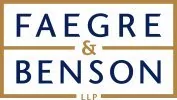From November 2008, the U.K. will implement a radically new immigration system for "migrant workers"—the term given to all workers from outside the European Economic Area and Switzerland. This update covers some of the recent developments in the evolution of the new system, along with an overview of its requirements.
Requirements Under the New System
- Employers will need to be licensed as sponsors by the UK Border
Agency (UKBA) to bring in, or to renew the immigration status of,
these migrant workers after the November start date.
- Employers will not be licensed unless they can demonstrate that
they are able to track, monitor and report to UKBA on their migrant
worker population.
- Migrant workers will need to demonstrate that they meet the
requirements of the immigration rules, including that they have
enough points to qualify for the immigration category for which
they are applying.
Recent Developments
- UKBA has now published a deadline of October 1st for the
receipt of sponsorship applications for those employers who will
need to be sponsors by late November, when Tier 2 (for skilled
workers) and Tier 5 (youth mobility and temporary workers) of the
new system will start.
- Employer's designing HR systems and procedures to meet the
requirements for sponsorship, and to anticipate the steps required
it needs to take to issue a Certificate of Sponsorship for a
migrant worker, should review Appendix D of the Guidance for Sponsor Applications. Appendix D
describes the documents that a sponsor should have and keep for
each migrant worker to justify the issuance of a Certificate for
that migrant worker. Note: this Guidance document
continues to be amended, most recently on 16 September 2008.
- UKBA has recently published more details of the Tier 2
equivalent to a recruitment search undertaken under the current
work permit regime. Under Tier 2, if the migrant is not an
intra-company transfer or the position is not on the Shortage Occupation List, the job must pass
the "resident labour market" test (RMLT). One significant
difference is that the places where a position can be advertised to
meet the RMLT will now be mandated and listed by job title, all as
set out in new Codes of Practice.
- When a UKBA compliance officer makes a site visit, a
sponsorship applicant or later a sponsor will be expected to
readily provide a list of all employees who are migrant workers.
UKBA has clarified that the officers are likely to check about 10%,
but probably no more than 10 in total, of those employees against
its own records. Compliance officers will not ignore inadequacies
in an employer's "right to work" document checking
procedures discovered during this process.
- The compliance officer will help the employer to resolve
compliance problems that are minor, brief and few. The focus is to
make sure that the employer is, or can become a sponsor, willing
and able to comply with its obligations. As a general principle,
UKBA officials say they are more interested in using their
enforcement powers to root out systematic, knowing abuses of the
immigration laws.
- The ambiguities of the "business visitor" category
have been a continuing source of confusion for employers. UKBA
recognises this and intends to publish new guidance for this
category of non-"working" visitors before the Tier 2
(skilled migrant) category starts so as to remove areas of
uncertainty.
- UKBA has acknowledged that sponsors are likely to have
employment law responsibilities to employees that may well clash
with decisions taken by UKBA to curtail a migrant worker's
ability to work and remain in the UK if the employer's
sponsorship status lapses or is terminated. A senior UKBA official
has promised to have these issues reconsidered.
The content of this article is intended to provide a general guide to the subject matter. Specialist advice should be sought about your specific circumstances.


